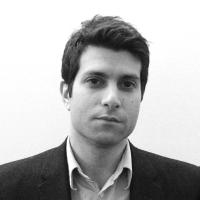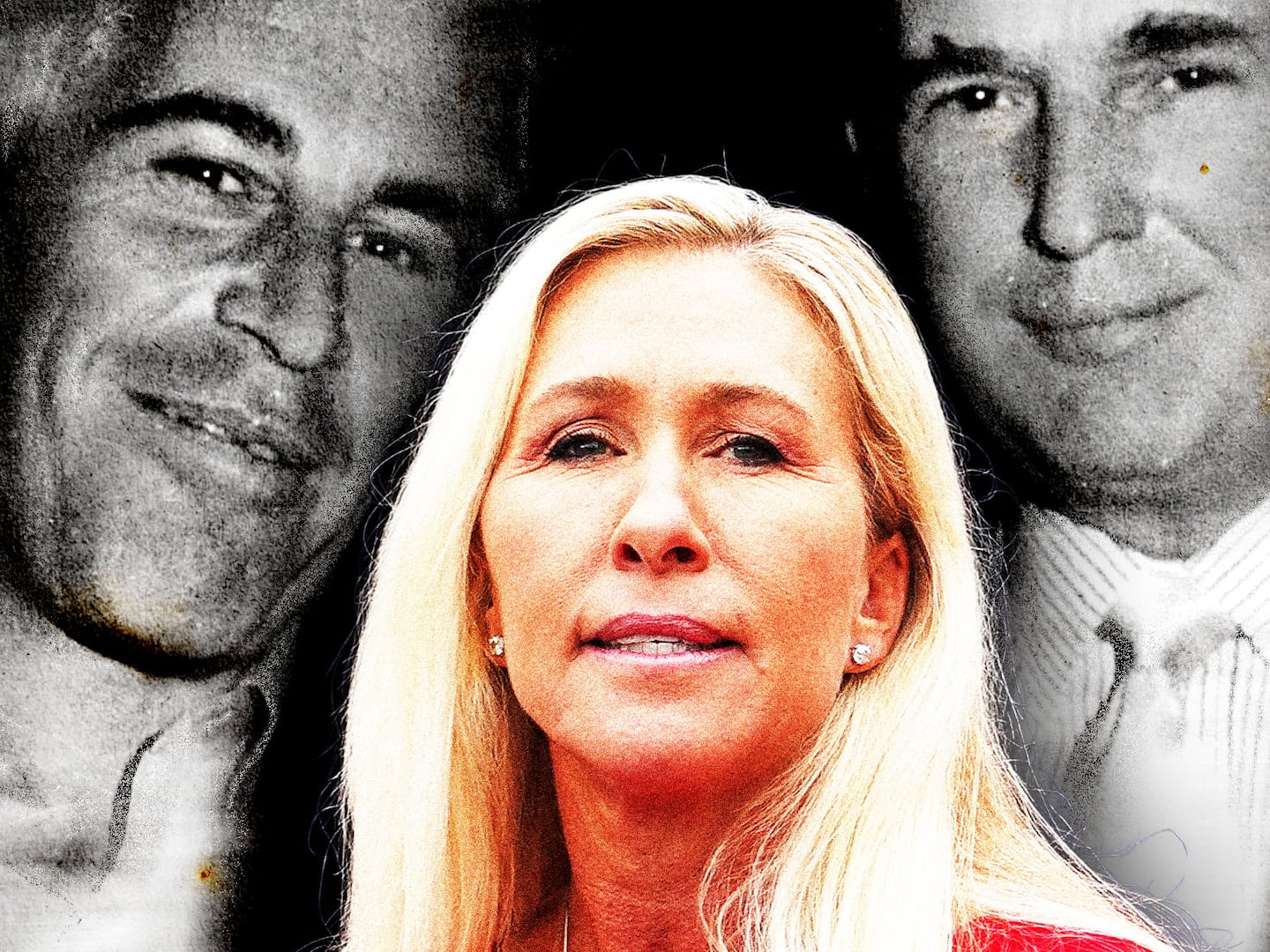When Alstory Simon walked out of prison on the last day of October, it was 15 years since he had first confessed to murdering a young couple by the side of a pool.
At the time it looked like justice served. But not long after, Simon started claiming that he’d been set up. He said he was lied to and coerced into giving his confession by people working with a group called the Innocence Project, which was trying to exonerate a different man—Anthony Porter—who had been convicted earlier of killing the young couple.
Simon’s story was hard to believe. If he was an innocent man, why had he confessed, on more than one occasion, to being a murderer? And why would the Innocence Project, an esteemed group dedicated to freeing the wrongly imprisoned, have framed an innocent man? For years, few paid attention to Simon’s claims or the appeals from his lawyers and his small group of supporters. Then a few weeks ago, the state’s attorney released Simon and vindicated his account. Fortunes reversed and what was far-fetched yesterday was suddenly closer to fact.
The story of Alstory Simon has all the scope and scale, the cruel reversals, and pointless waste of proper tragedy. And it has those staples of the modern form: villains with good intentions and powerful figures insulated by their position from the damage they cause.
All of Chicago and half the state of Illinois seem to be involved in the case. It’s got the housing projects and the governor’s office, the press bureau and police force, university professors, private investigators, college students, criminals, and scapegoats. Over the decades, it’s touched anybody in shooting range of power and yet so far claimed only a handful, all of them from the projects.
The one crime everyone is sure of is the murders.
It was just after midnight on an August night in 1982. A young couple was cooling off by a public pool on Chicago’s South Side when a gunman fired five shots at close range, ending their lives. Jerry Hillard and Marilyn Green planned to get married. They were still in their teens when they died. Green left two children behind.
The police found six eyewitnesses who reported seeing Anthony Porter at the pool that night and named him as the killer. Porter, a gangster who’d shot a man in the head only two weeks prior, lived, as did his victims, in the nearby Robert Taylor housing projects. He surrendered to police days after they issued a warrant for his arrest. At that time, with the eyewitnesses all pointing at Porter, the case seemed open and shut. Porter was convicted and shortly after sentenced to death by a judge who compared him to a shark in a feeding frenzy.
It’s here, after the original crime and Porter’s conviction, where guilt and innocence get lost—or hidden and abused depending on who’s telling the story.
Fifteen years after he was sentenced to death, days before his scheduled execution in 1998, Porter’s lawyers won a reprieve. The state of Illinois wouldn’t kill him until it concluded a competency hearing to determine if Porter’s low IQ should make him unqualified for capital punishment.
Enter the Innocence Project.
David Protess was a star professor at Northwestern University’s Medill School of Journalism. His work had overturned convictions in a number of high-profile cases that won freedom for the wrongfully imprisoned and earned the professor a degree of fame and prestige that included a TV-movie deal and a new post.
In 1999, Protess was picked to head up Medill's Innocence Project, a position that combined traditional coursework with legal crusading. From the start, Protess and his students were doing more than reading legal briefs. They were acting as amateur gumshoes, Protess dispatching the students to interview witnesses and dig up new evidence, sometimes blurring the line between classroom and courtroom.
Protess was looking for wrongful convictions, for innocence stolen by a justice system that can become fixed on guilt and punishment, incapable of reversing course when it gets the wrong person in its vice.
In Anthony Porter, a man who’d just narrowly escaped execution, Protess believed he’d found such a case, and perhaps a chance to fight against the death penalty itself by proving—if he could show that Porter was innocent—that the state had been prepared to kill an innocent man.
Certain that they were in the right, and with the fate of Anthony Porter in the balance, the members of the Innocence Project looked to pin the murders on a different man: Alstory Simon. That’s when they started getting their hands a bit dirty.
“This investigation by David Protess and his team involved a series of alarming tactics,” the Cook County State’s Attorney, Anita Alvarez, said in her statement after Simon’s release last month. The Medill Innocence Project’s tactics, “were not only coercive and absolutely unacceptable by law-enforcement standards,” according to Alvarez, “they were potentially in violation of Mr. Simon’s constitutionally protected rights.”
Perhaps the worst of those alarming tactics were used by Paul Ciolino, a private investigator working with Protess who got Simon to confess to the murder. According to Alvarez’s findings, Ciolino threatened Simon, promised him a short sentence and financial rewards for cooperating, and used an actor to play a witness who accused Simon of the shooting. Finally, Ciolino volunteered a lawyer, Jack Rimland, to represent Simon in court. Rimland, a personal acquaintance of Ciolino, may have had a confict of interest defending a man that his associate was trying to prove guilty, but that didn’t stop him from taking the case.
At the time, it did the trick. Alstory Simon confessed to the murder on video and within days, after more than a decade on death row, Porter walked free.
It was that fast, from death row to freedom, after years of failed appeals, and several eyewitnesses still naming Porter as the killer. Two days after Simon’s confessions, Porter was out on a provisional release pending a fitness hearing.
At this point, the case was no longer being driven by the Innocence Project. The state’s attorney was leading the charge. Forced to deal with Porter by the packet of evidence Protess’s team put together, including Simon’s confession and several new witness statements, the political pressure was building.
Thomas Epach, the chief of the criminal division in the Cook County State’s Attorney’s Office, later said of the proceedings:
“Nothing like this has ever happened before, certainly not in Cook County. Here the prosecutor spends weeks before the grand jury retrying Porter, calling witnesses and in the end proving once again that Porter committed the crime. Then a few weeks later, that same prosecutor stands before the sentencing judge and doesn’t utter a word about that evidence as Simon is being sentenced to prison for Porter’s crime.”
Epach was in the minority. Whatever feelings other state attorneys and government officials had about Porter’s guilt or Simon’s innocence, the matter moved quickly. Just over a month after his release and one grand jury later, the murder charges against Porter were dropped.
It was monumental, a great victory not only for Porter and the Innocence Project, but for the principle of justice. George Ryan, the then-governor of Illinois was so moved, in his own account, by watching Porter’s ordeal on TV, he asked his wife, “How the hell does that happen? How does an innocent man sit on death row for 15 years and get no relief?” It was the moment that led Ryan to order a moratorium on the death penalty in Illinois. Ryan’s compassionate turn may have had a touch of self-preservation: He later wound up in prison on charges of his own.
In 2011, Illinois extended the moratorium begun under Governor Ryan into a full ban on capital punishment. It was the culmination of the work Protess had begun. And it came as his own innocence was under fierce attack.
“I have spent three decades exposing wrongful conviction only to find myself in the crosshairs of others who are wrongfully accusing me,” Protess said at the time.
Starting in 2009, State’s Attorney Alvarez, the same prosecutor who just freed Simon and blamed Protess and his cohorts for contributing to his false imprisonment, launched an inquiry that centered on another Innocence Project case.
After initially defending the program, Medill launched an investigation of its own. In the end, it was found that students working under Protess had used false pretenses in trying to elicit witness statements. More damningly, the professor’s claim that the records from his class’s work were protected by journalistic privilege was undermined by the discovery that he’d altered an email instructing that the project’s findings should be turned over directly to defense counsels without any copies retained.
When it was all over, Protess had negotiated his retirement and left the school. His reputation bruised but with legacy of his central victory—winning Anthony Porter’s freedom—still intact.
After Simon’s release last month and the accusation that Protess helped put an innocent man in prison for 15 years, possibly freeing a killer in the bargain, his legacy may be the least of his concerns.
Epach, the former chief of the state’s attorney’s criminal division, didn’t give much credit to the Innocence Project motives, which few have doubted were noble. “Journalism professor leading a bunch of naïve students around by their noses?” he asked. “A travesty. The good Lord has saved a special place in Hell for all those responsible for this wrongdoing. That special place is right next to the furnace.”
Outside of the state attorney’s office, which some have accused of harboring a personal vendetta against Protess for his past work, the Innocence Project had other enemies. At the top of the list is William Crawford, a former journalist in Chicago and author of a book about the case, Chimera (PDF), who has been a staunch advocate of Simon’s innocence and lacerating critic of Protess and his partners in the Innocence Project.
Yet even Crawford says that the focus on Protess is a distraction that lets off the hook the politicians and government officials who had the final power over the fates of Simon and Porter.
“If Alvarez moves too honestly in this investigation, she’s gonna wind up indicting a former state’s attorney, a current sitting judge, and various other people now in ranking position,” Crawford said. “This is Cook County politics and you don’t play that kind of game.”
But what kind of game is being played if the State’s Attorney’s Office is so convinced of wrongdoing that they overturn a murder conviction, all but say he was framed—and yet refuse to hold anyone responsible for the travesty?
“The bottom line,” Alvarez said, “is the investigation conducted by Protess and private investigator Ciolino as well as the subsequent legal representation of Mr. Simon were so flawed that it’s clear the constitutional rights of Mr. Simon were not scrupulously protected as our law requires.”
Look in the Chicago phone book and Protess is running the Chicago Innocence Project, Ciolino is still working as a private investigator, and Jack Rimland is still practicing law. And that’s not even mentioning central figures like the former State’s Attorney Dick Devine, and Assistant Cook County State’s Attorney Thomas Gainer, who agreed to dropped the murder charges against Porter after putting together all the evidence to show that he was guilty.
According to Crawford, Alvarez is “focusing her entire effort publicly on Protess” to deflect attention. “She doesn’t breathe a word” about the former prosecutor’s role.
Perhaps. Perhaps not. But two things are clear in this tail-eater of a case: First, there seems to be plenty of guilt but hardly a criminal in sight. Second, whoever murdered Jerry Hillard and Marilyn Green is still free.
Of course if the state got it wrong the first two times, convicting Porter and Simon before freeing them both, it stands to reason they could be getting wrong again now. Maybe that’s as good an argument as any for why the death penalty is unjust. It’s immutable and deaf to appeal; even when it’s wrong, it’s final. Protess’s work, and the story of the Porter case, helped end that in Illinois, but they may have done so by relying on another kind of archaic sentence. When you look at the trials of Alstory Simon, it’s human sacrifice that comes to mind.






